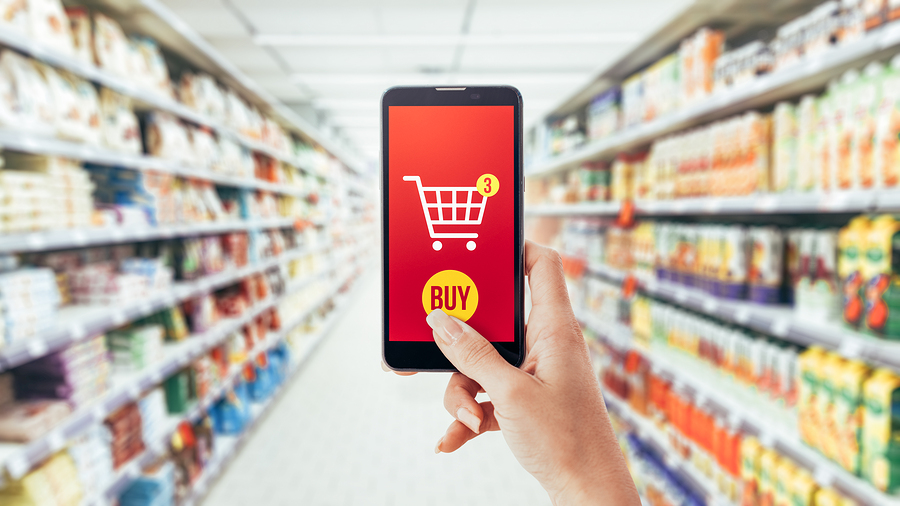
GroceryShop Returns
August 29th, 2019 Posted by Emergent brand strategy, branded content, e-commerce, Emerging brands, food retail strategy, Food Trend, grocery e-commerce, Retail brand building, shopper experience, Supermarket strategy 0 comments on “GroceryShop Returns”Perhaps the most important convention in the food industry
From September 15 to 18 the food industry convenes in Las Vegas at the Venetian Hotel for the second edition of GroceryShop, Anil Aggarwal’s novel answer to a lingering gap in the meetings realm for food business and related technology companies.
Unlike most industry meetings focused on presenting a vast ocean of booths where company sales and marketing staff feature their latest products and services, GroceryShop is more focused on the sea changes, business model disruption and consumer shifts impacting one of the nation’s most important and robust industries.
E-commerce and digitization of the food business has buffeted the value propositions of traditional supermarkets, supported the emergence of new, higher quality food brands with mission-oriented story to tell, and witnessed the rapid rise of e-commerce channel shopping as consumers increasingly acquire food from the comfort of their dining room table.
Packaged food marketers and retailers alike have sought to better understand how to manage the transformational changes occurring around them. Mr. Aggarwal stepped in with a conference concept long on content and insight presentations more so than a straight buyer-meets-seller proposition.
GrocceryShop’s rapid rise can be attributed to creatively answering the thirst for guidance and direction in a rapidly changing business environment. Unlike the food business conventions of yesteryear where global food corporations such as Nestle and Mondelez held court with retail buyers, GroceryShop connects the likes of Google and Facebook to the conversation on how consumers will operate in a digitally-enabled world and what trends in fresh and prepared food will get traction at retail outlets.
GroceryShop presentations examine new technologies in supply chain management, while brand marketing discussions look towards the shift from traditional ad media and promotions to engagement based on relevance to healthy living and lifestyle aspirations, fed by digital forms of outreach and social media.
The Future of the Food Business
The content forward approach Mr. Aggarwal has landed on serves as inspiration and best practice showcase to retail and CPG executives alike on how to remain relevant and inject deeper meaning into their brand and banner propositions.
The food business is in a state of rapid transition as consumers increasingly shop for menus rather than stock ups and the rise of super-convenient restaurant delivery makes out-sourcing dinner a viable last-minute option on a busy weeknight. Food has never been more competitive as quality choices are within arms-length from virtually anywhere.
- According to Accenture, the 80 million or so Millennials, now in their prime spending years, wield roughly $600 billion in annual spending power. For the grocery industry that ladders up to about $2,300 per year on average spending at food retail. According to a recent national survey by Sweet Earth Foods, this cohort will try at least 46 new foods each year, helping drive the emergence of new food and beverage brands now gaining additional in-store real estate at supermarkets.
Meantime the grocery industry is reacting to the significant moves by Amazon into their territory through Whole Foods and its own Prime delivery, by bolting on outside e-commerce ordering and delivery solutions from Shipt and Instacart.
So much change and so quickly for a retail business that for many years was fueled by selling boxes, cans and bags off shelves at high velocity and razor-thin margins. Now the perimeter fresh departments hold the magic and in-store groceraunts are popping up to satisfy the inevitable last-minute rush to answer the pounding question, what’s for dinner?
All of this helps explain why GrcoeryShop has traveled so far so fast as business model disruption impacts Big Food and small grocery chains alike. If you haven’t thought about where you need to be this September, might be good to check it out: http://www.groceryshop.com
Looking for more food for thought? Subscribe to our blog.
Bob Wheatley is the CEO of Chicago-based Emergent, the healthy living agency. Emergent provides integrated brand strategy, communications and insight solutions to national food, beverage, home and lifestyle companies. Emergent’s unique and proprietary transformation and growth focus helps organizations navigate, engage and leverage consumers’ desire for higher quality, healthier product or service experiences that mirror their desire for higher quality lifestyles. For more information, contact [email protected] and follow on Twitter @BobWheatley.




